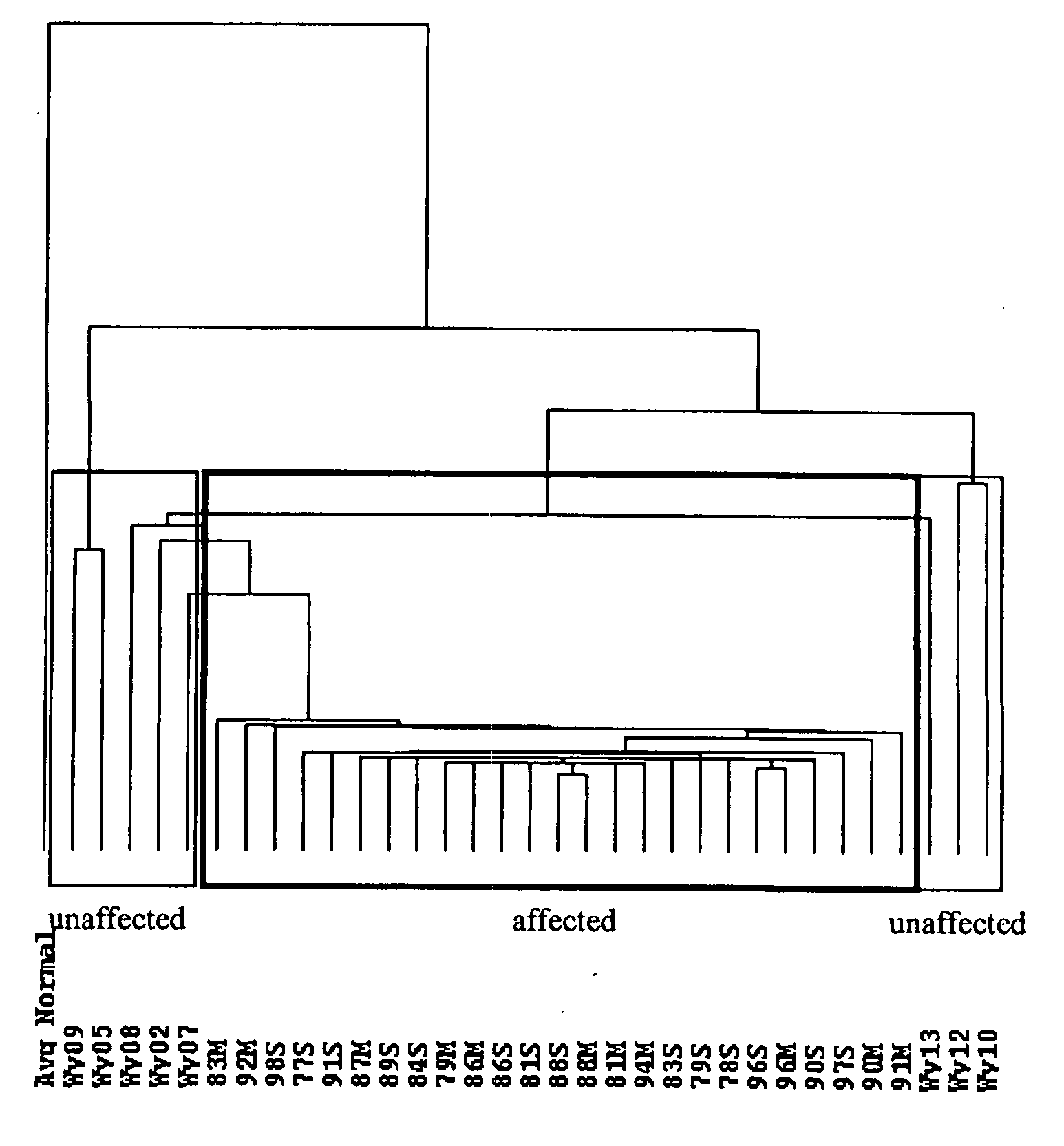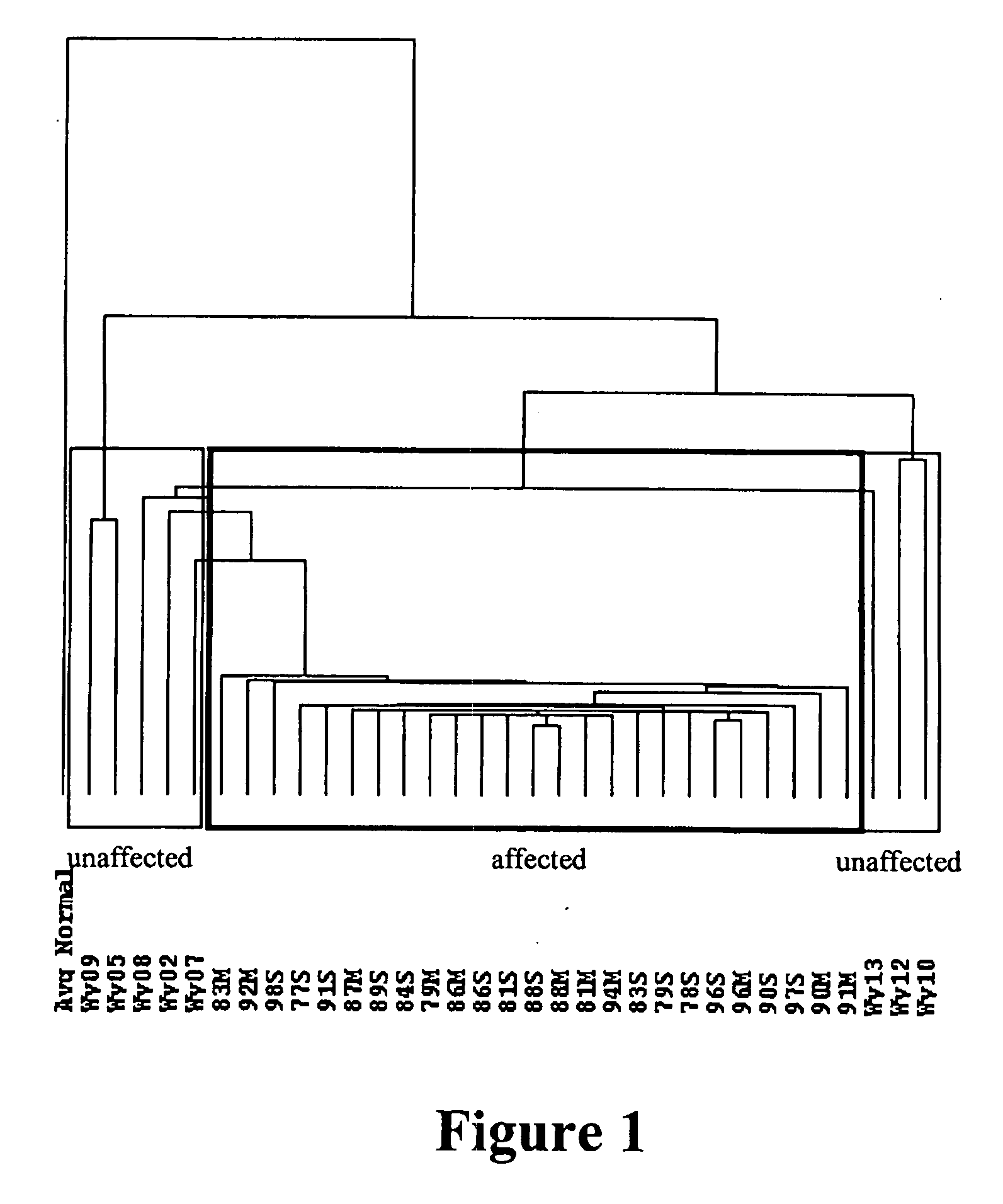Nucleic acid arrays for detecting gene expression associated with human osteoarthritis and human proteases
a technology of human osteoarthritis and proteases, applied in the field of nucleic acid arrays, can solve the problems of preventing the widespread use of human genes in the drug development process, laborious and time-consuming interpretation of this gene expression data, etc., and achieves the effect of accelerating the drug development process and facilitating the study of human osteoarthritis
- Summary
- Abstract
- Description
- Claims
- Application Information
AI Technical Summary
Benefits of technology
Problems solved by technology
Method used
Image
Examples
example 1
Nucleic Acid Array
[0129] The tiling sequences depicted in Attachment C were submitted to Affymetrix for custom array design. Affymetrix selected probes for each tiling sequence using its probe-picking algorithm. Non-ambiguous probes with 25 bases in length were selected. Thirty-nine probe-pairs were requested for each tiling sequence with a minimum number of acceptable probe-pairs set to twenty-five. The final array was directed to 5,028 human transcripts and contained 198,286 perfect match probes and 198,286 mismatch probes, including 102 exogenous and endogenous control probe sets. These probes are shown in Attachment H.
[0130] The probes in Attachment H are perfect match probes and correspond to SEQ ID NOs: 5,338-203,623, respectively. Each probe in Attachment H has a qualifier (“Header”) which is identical to the qualifier of the corresponding tiling sequence from which the probe is derived. The strandedness of each probe (“Target Strandedness”) is also demonstrated.
[0131]FIG....
example 2
Nucleic Acid Array Hybridization
[0132] 10 μg of biotin-labeled sample DNA / RNA is diluted in 1× MES buffer with 100 μg / ml herring sperm DNA and 50 μg / ml acetylated BSA. To normalize arrays to each other and to estimate the sensitivity of the nucleic acid arrays, in vitro synthesized transcripts of control genes are included in each hybridization reaction. The abundance of these transcripts can range from 1:300,000 (3 ppm) to 1:1000 (1000 ppm) stated in terms of the number of control transcripts per total transcripts. As determined by the signal response from these control transcripts, the sensitivity of detection of the arrays can range, for example, between about 1:300,000 and 1:100,000 copies / million. Labeled DNA / RNA are denatured at 99° C. for 5 minutes and then 45° C. for 5 minutes and hybridized to the nucleic array of Example 1. The array is hybridized for 16 hours at 45° C. The hybridization buffer includes 100 mM MES, 1 M [Na+], 20 mM EDTA, and 0.01% Tween 20. After hybridiz...
PUM
| Property | Measurement | Unit |
|---|---|---|
| temperature | aaaaa | aaaaa |
| pH | aaaaa | aaaaa |
| Tm | aaaaa | aaaaa |
Abstract
Description
Claims
Application Information
 Login to View More
Login to View More - R&D
- Intellectual Property
- Life Sciences
- Materials
- Tech Scout
- Unparalleled Data Quality
- Higher Quality Content
- 60% Fewer Hallucinations
Browse by: Latest US Patents, China's latest patents, Technical Efficacy Thesaurus, Application Domain, Technology Topic, Popular Technical Reports.
© 2025 PatSnap. All rights reserved.Legal|Privacy policy|Modern Slavery Act Transparency Statement|Sitemap|About US| Contact US: help@patsnap.com


